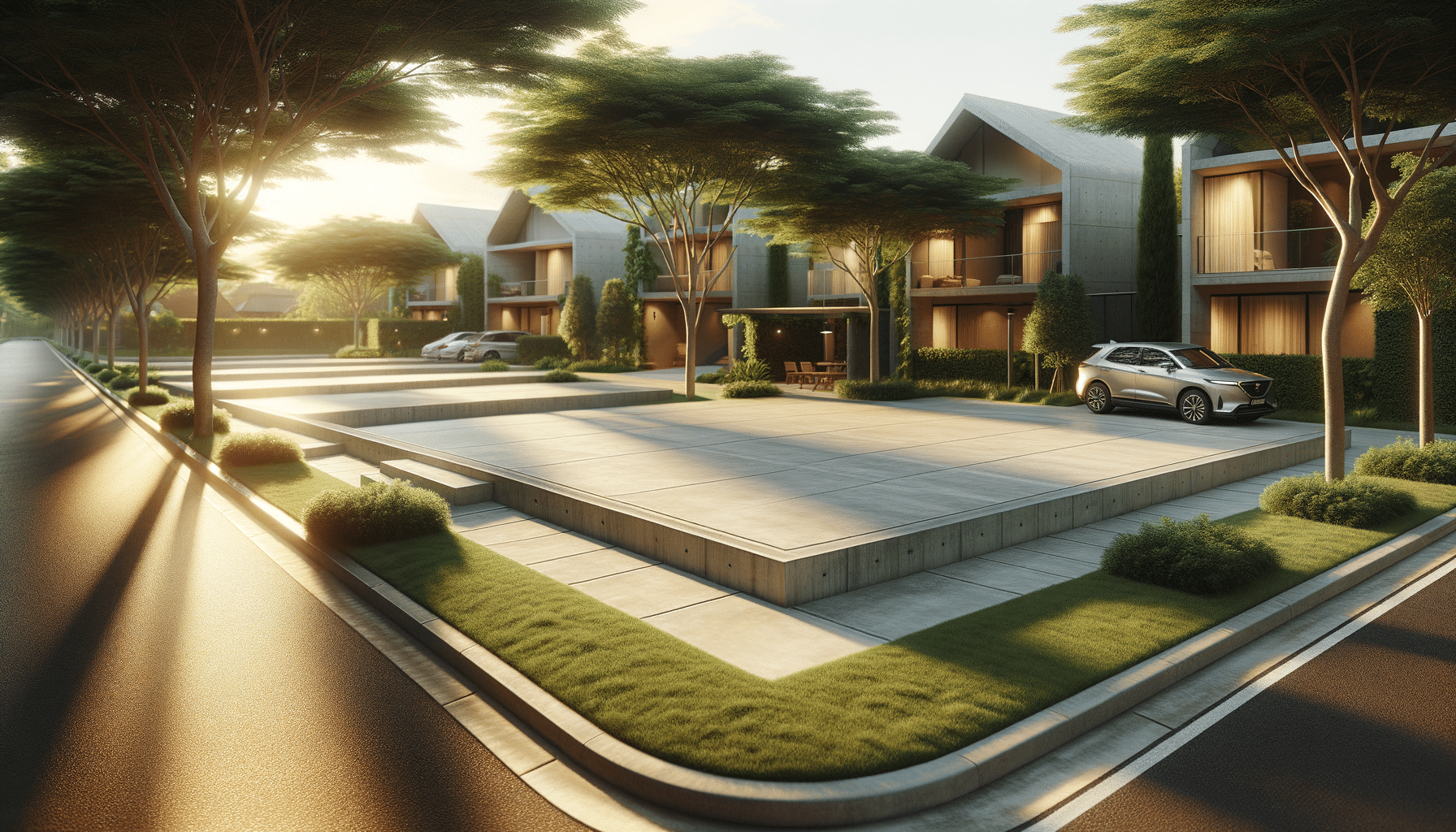
Constructing Parking Pads Near Residential Areas: A Comprehensive Guide
Introduction to Parking Pad Construction
In the ever-evolving landscape of urban development, the need for efficient parking solutions is more pressing than ever. With increasing vehicle ownership and limited parking spaces, constructing parking pads near residential zones has become a practical solution. This article delves into the various aspects of parking pad construction, offering insights into planning, materials, and compliance with regulations.
Parking pads serve as a dedicated space for vehicles, often alleviating congestion on narrow streets and providing homeowners with convenient access to their vehicles. The construction of these pads requires careful planning and execution to ensure they blend seamlessly with the surrounding environment while meeting the necessary safety and structural standards. As we explore this topic, we will cover the planning phase, material selection, construction process, and legal considerations.
Planning Your Parking Pad
Before breaking ground, the planning phase is crucial to ensure the successful construction of a parking pad. This phase involves assessing the available space, understanding local zoning laws, and determining the optimal location for the pad. Homeowners should consider factors such as proximity to the residence, accessibility, and the impact on landscaping.
One of the first steps is to consult local zoning regulations. These laws dictate the permissible size and location of parking pads, ensuring they do not encroach on public spaces or violate property boundaries. Additionally, homeowners may need to obtain permits or approvals from local authorities, a process that can vary significantly depending on the region.
Another important consideration is the environmental impact. It’s essential to assess how the construction might affect drainage patterns and whether it requires the removal of trees or other vegetation. Proper planning can mitigate these impacts, ensuring the parking pad is both functional and environmentally friendly.
Choosing the Right Materials
The choice of materials plays a significant role in the durability and aesthetics of a parking pad. Common materials include concrete, asphalt, gravel, and pavers, each with its own set of advantages and drawbacks.
- Concrete: Known for its strength and longevity, concrete is a popular choice for parking pads. It offers a clean, modern look and can withstand heavy loads. However, it may require professional installation and can be more expensive than other options.
- Asphalt: Asphalt is another durable option, often chosen for its flexibility and ease of installation. It is less expensive than concrete but may require more frequent maintenance to prevent cracking and potholes.
- Gravel: Gravel is a cost-effective and eco-friendly choice, allowing for natural drainage. However, it may not provide the same level of stability or aesthetics as paved surfaces.
- Pavers: Pavers offer a versatile and visually appealing solution. They come in various colors and patterns, allowing homeowners to customize the look of their parking pad. Pavers are also relatively easy to repair, as individual pieces can be replaced if damaged.
Ultimately, the choice of material will depend on budget, desired aesthetics, and the specific needs of the homeowner. Consulting with a professional can provide valuable insights into the best options for a particular site.
Construction Process
Once the planning and material selection are complete, the construction phase begins. This involves preparing the site, laying the foundation, and installing the chosen surface material.
The first step in construction is site preparation. This involves clearing the area of any vegetation, debris, or existing structures. The ground must then be leveled and compacted to provide a stable base for the parking pad. Proper drainage should be ensured to prevent water accumulation, which can lead to structural damage over time.
Next, the foundation is laid. For concrete or asphalt pads, this typically involves pouring a base layer of gravel or crushed stone, followed by the application of the surface material. For gravel or paver installations, the process may involve spreading and compacting the gravel or setting the pavers in a predetermined pattern.
Throughout the construction process, it is important to adhere to local building codes and safety standards. This not only ensures the longevity and safety of the parking pad but also prevents potential legal issues down the road. Engaging a professional contractor can help navigate these requirements and ensure a high-quality installation.
Legal Considerations and Compliance
Compliance with local regulations is a critical aspect of parking pad construction. Homeowners must ensure that their project adheres to zoning laws, building codes, and any other relevant regulations. Failure to comply can result in fines, legal disputes, or the need to alter or remove the parking pad.
One of the key legal considerations is obtaining the necessary permits. The requirements for permits can vary widely depending on the location and scope of the project. It is advisable to consult with local authorities or a legal expert to understand the specific requirements in your area.
In addition to permits, homeowners should be aware of any neighborhood covenants or homeowner association rules that may impact the construction of a parking pad. These rules can dictate the appearance, size, and location of the pad, ensuring it aligns with community standards.
Finally, it is important to consider liability and insurance. Homeowners should verify that their insurance policy covers any potential damage or accidents related to the parking pad. This can provide peace of mind and financial protection in the event of unforeseen issues.
By addressing these legal considerations, homeowners can ensure a smooth and compliant construction process, resulting in a functional and aesthetically pleasing parking pad.
Conclusion: Enhancing Residential Zones with Parking Pads
Constructing a parking pad near a residential zone is a valuable investment that enhances convenience and property value. By carefully planning, selecting the right materials, and adhering to legal requirements, homeowners can create a functional and attractive space that meets their needs.
While the process may seem daunting, the benefits of a well-constructed parking pad are undeniable. It provides a dedicated space for vehicles, reduces street congestion, and enhances the overall appeal of the property. With thoughtful execution and attention to detail, a parking pad can be a seamless addition to any residential area.


